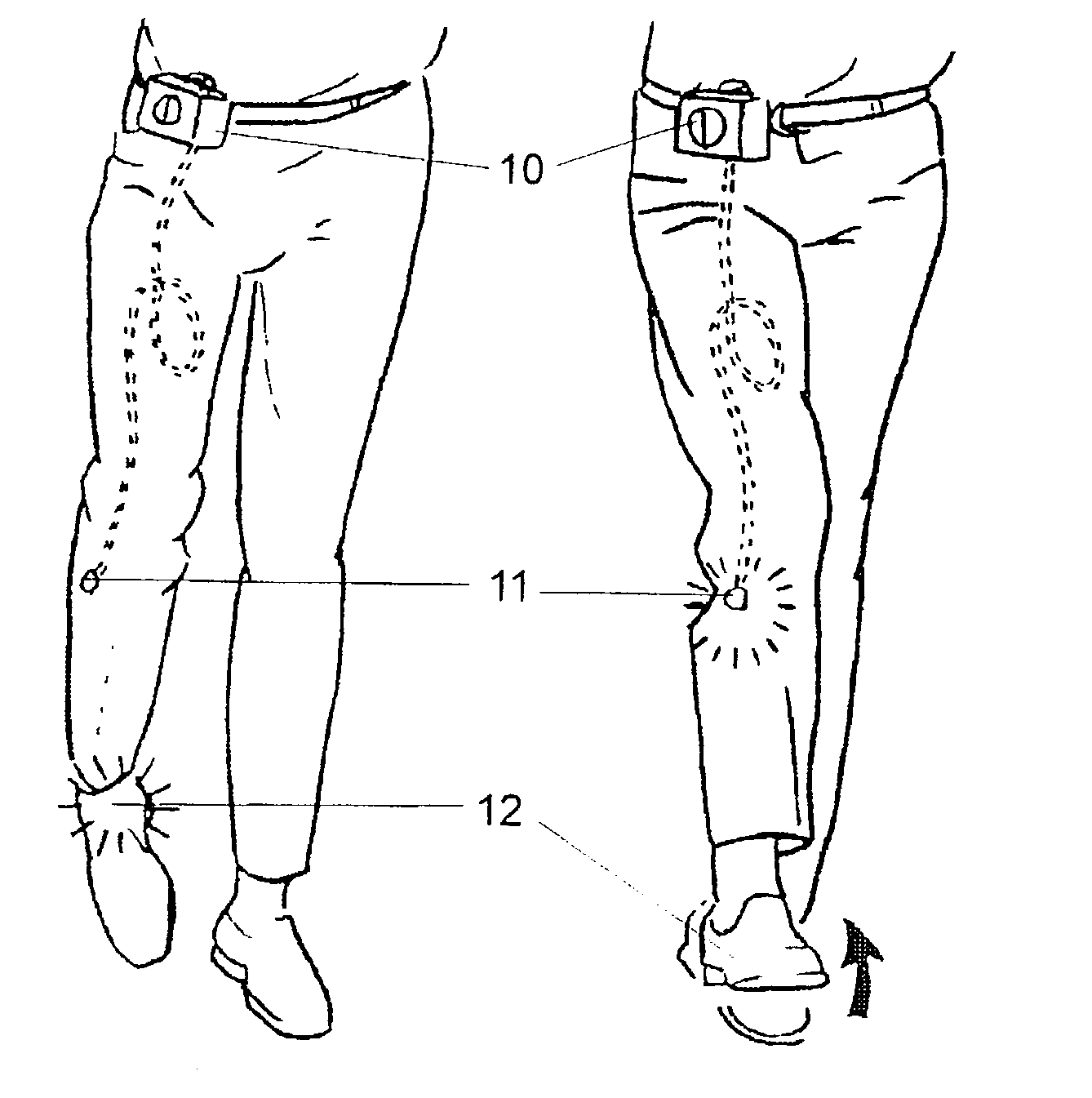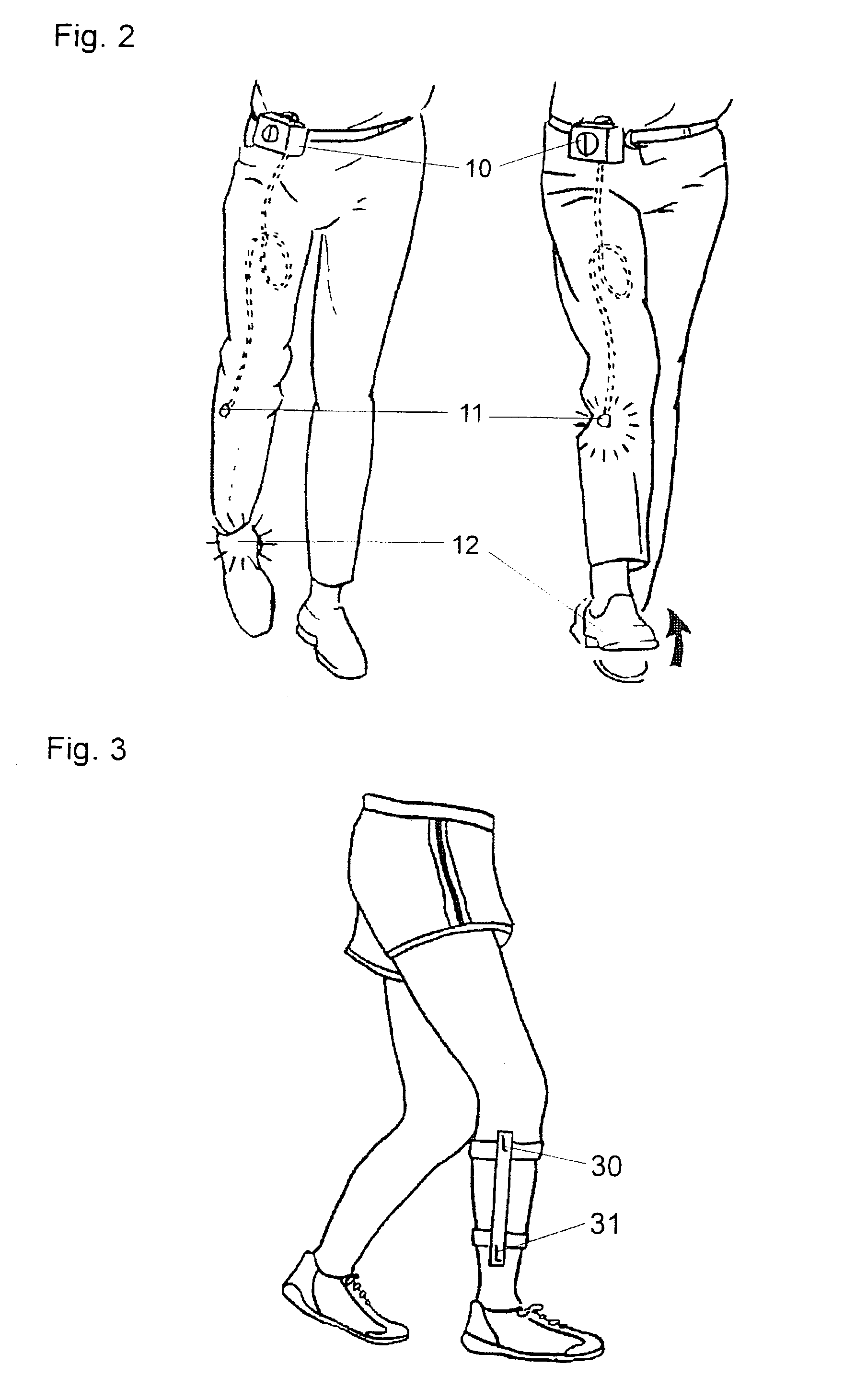Method and implantable systems for neural sensing and nerve stimulation
a neural sensing and nerve stimulation technology, applied in the field of method and implantable systems for neural sensing and nerve stimulation, can solve the problems of crude delivery of stimuli, system never put on the market, and subjects implanted with the single-channel dfs system of medtronic walked with excessive inversion or eversion, so as to enhance the control of both sensing and stimulation aspects, the bulk of the implanted device is added, and the fragility is increased.
- Summary
- Abstract
- Description
- Claims
- Application Information
AI Technical Summary
Benefits of technology
Problems solved by technology
Method used
Image
Examples
example 1
[0091]Three hemiplegic patients were equipped with the first embodiment of the invention. It was tested if the system was able to produce dorsiflexion and if the multichannel stimulation electrode placed on the peroneal nerve above the knee was able to provide good selectivity so as to control the different movements of the foot. With proper balancing of the different channels of stimulation, it was possible to produce a movement of the foot that was almost pure dorsiflexion, which is the natural movement and thus most cosmetically acceptable and least damaging to the ankle during gait. In FIG. 7 an example of the torques measured around the ankle joint of a human subject with a 12-polar nerve cuff electrode implanted on the common peroneal nerve proximal to the knee. The foot was fixed during the measurements and the isometric torques generated around the ankle were recorded while the stimulation intensity was increased from zero to maximum (pulse width 0-250 μs, current 1 mA, freq...
example 2
[0113]As will be described in the following, the present inventors have demonstrated that a cutaneous nerve signal from the foot can be recorded from the peroneal nerve proximal to the knee, using the same electrode as was used for 10 stimulation of the nerve to dorsiflex the foot. It was also demonstrated that it is possible to record this signal concurrently while stimulating through the same cuff.
Methods
[0114]As part of the procedure for testing the implantable foot drop stimulator developed by the present inventors, three hemiplegic patients were instrumented with a 12-polar nerve cuff electrode (20 mm long, 5.2 mm ID) on the common peroneal nerve a few centimetres proximal to the knee. The eight lead-wires to the electrode were for an initial 8-week period taken out through the skin. This procedure allowed direct electrical access to the cuff in this initial period.
[0115]One of the patients (female, 32 year old) further had a nerve cuff placed on the sural nerve proximal to the...
PUM
 Login to View More
Login to View More Abstract
Description
Claims
Application Information
 Login to View More
Login to View More - R&D
- Intellectual Property
- Life Sciences
- Materials
- Tech Scout
- Unparalleled Data Quality
- Higher Quality Content
- 60% Fewer Hallucinations
Browse by: Latest US Patents, China's latest patents, Technical Efficacy Thesaurus, Application Domain, Technology Topic, Popular Technical Reports.
© 2025 PatSnap. All rights reserved.Legal|Privacy policy|Modern Slavery Act Transparency Statement|Sitemap|About US| Contact US: help@patsnap.com



